CASE STUDY
Re-inventing the
coffee supply chain with
Era of We - ERP
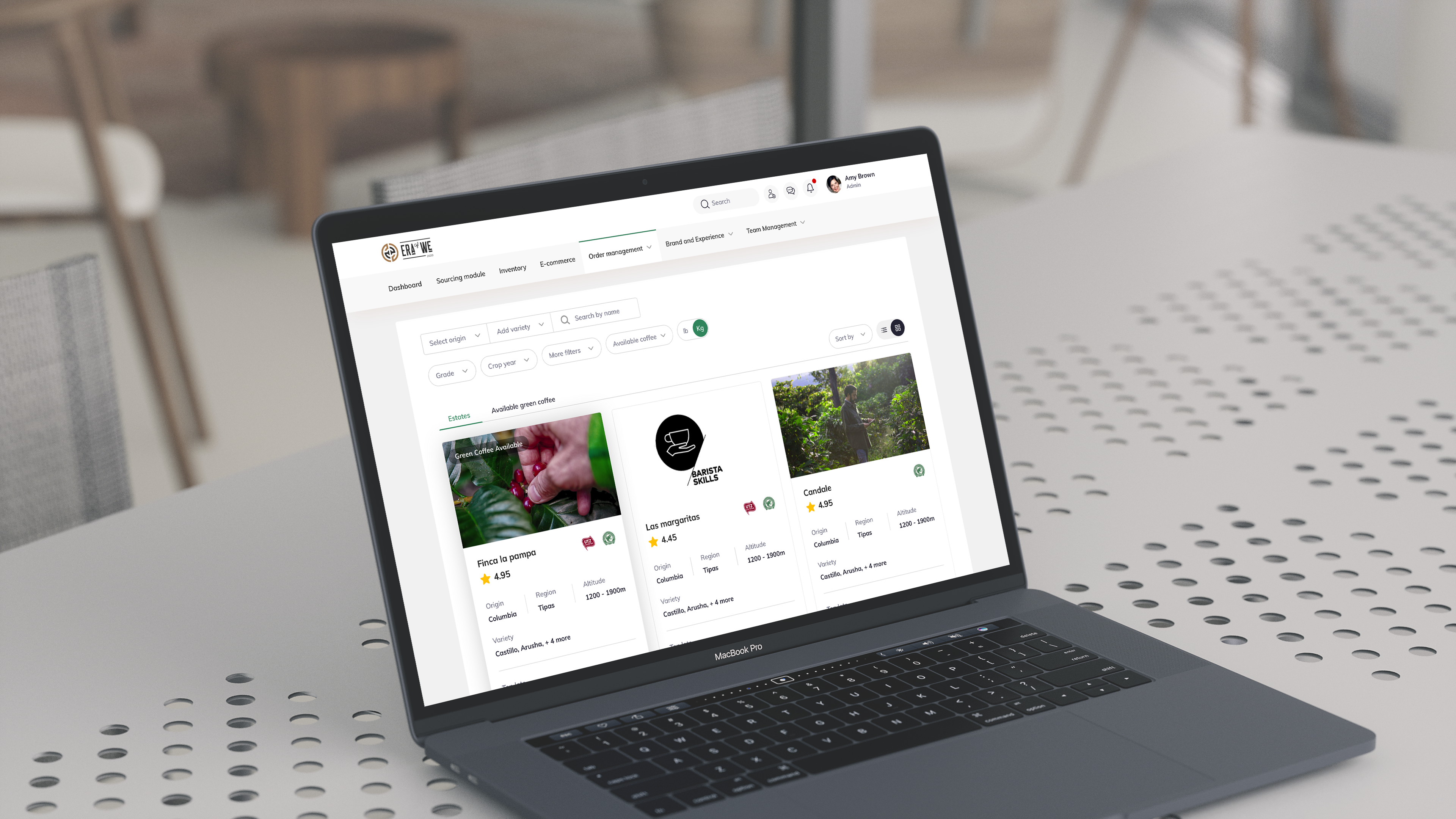
Era of We is an ERP platform that seeks to redefine the procurement of coffee throughout its supply chain. It aims to solve the pricing crisis by bringing equal opportunities to all stakeholders. The platform is built for 7 stakeholders, each with an indivisual login, to contirubute to the trade
The goal of the project was to develop a proof of concept (POC) to gauge user engagement, and the capabilities and actions required in the future.
I was responsible in conducting stakeholder interviews and workshops, along with setting the main framework of wireframes for the project. I led the team, to increase efficency and reduce communication barriers. This agile workflow allowed us to experiment and get to the best ideas faster.
YEAR
Jan 2020 - July 2022
SERVICES
Project Lead
Brand Visual director
UX Research & Design
UI direction
Dev Support
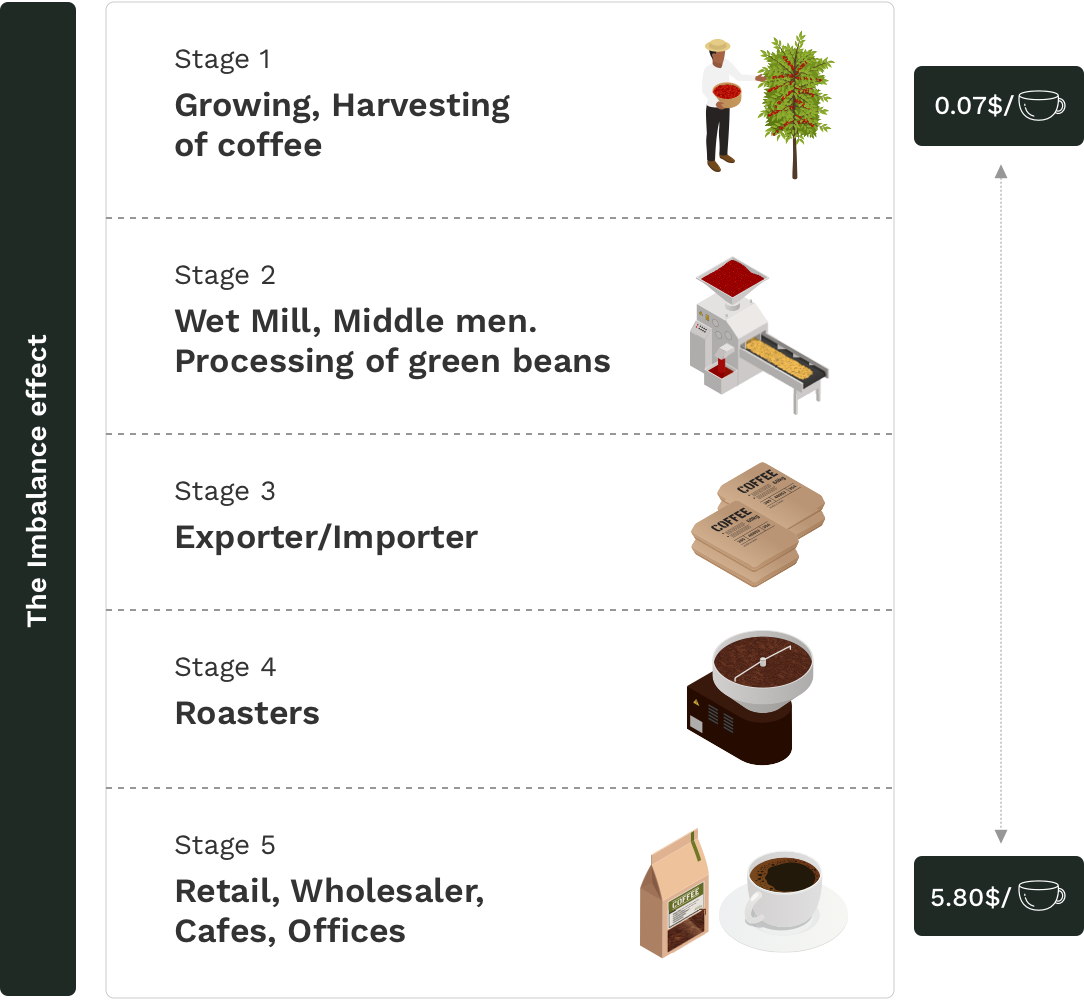
PROBLEM STATEMENT
"Coffee prices paid today are the same as in the 1970s."
The coffee industry today faces multiple challenges, the biggest of which is the pricing crisis being faced by the farmers. This has caused a substantial imbalance in the entire chain. Over the years, the imbalance has worsened inequality between the stakeholders, made coffee un-traceable, propped up communication barriers, and reduced trust within communities and peers. The platforms goal is to address these issues through improving accountability using digitization.
Users and Audience
The platform is built to cater all the stakeholders in the coffee supply chain ecosystem – from the producers to the end consumers.
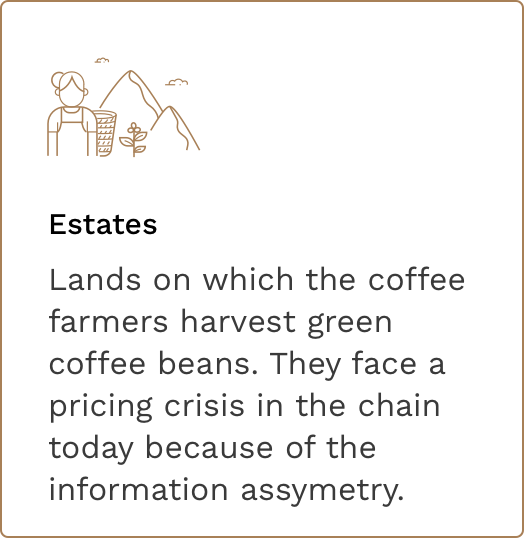
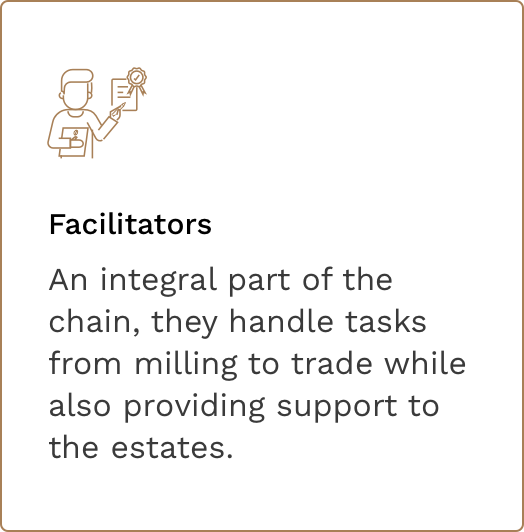
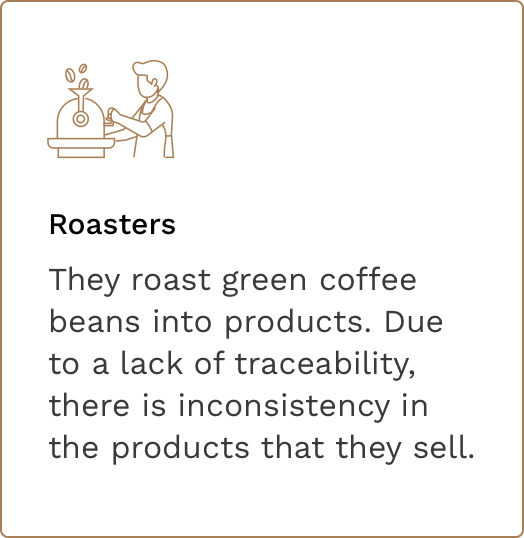
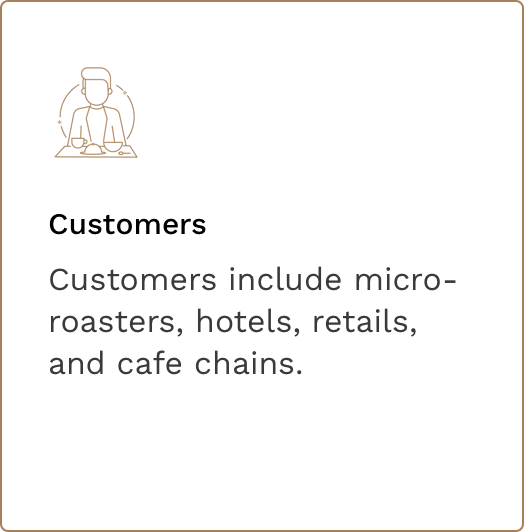
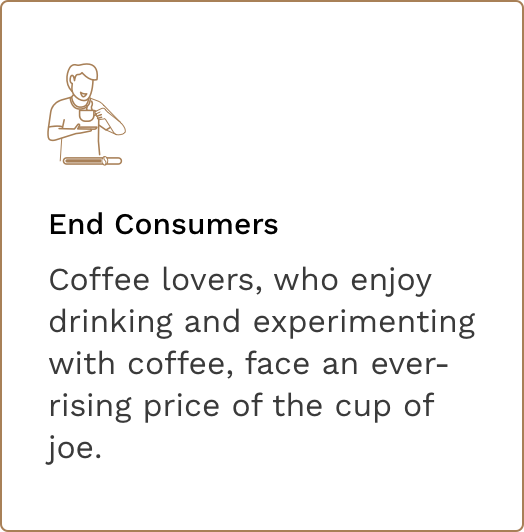
Supply Zone
Consumption Zone
The Challenge –
Digitizing the entire supply chain in 10 months.
Our goal for the project was to recapture the magic of the supply chain. A platfrom which was easy-to-use and profitable. Our ambitions were to create a strong foundation that embraced a rapidly evolving trade.


Interviews with the stakeholders
Numerous interviews were virtually conducted with stakeholders to understand their pain points and previous experiences with technology
Price determined by larger market value
"In today's competitive prices, we have to pay the price set by the food distributors which yields no profit. We are squeezed for them to make profits in the industry causing generations of farmers to go out of business"
PEDRO, ESTATE FARMER
Lacks traceability and transparency
"There is no transparency about where the coffee is coming from. It is hard for us as roasters to achieve consistency when we are not able to form stable relationships with the estates and source coffee that is ethical and sustainable "
MAGNUS, COFFEE ROASTER
We want ethically sourced coffee
"We want transparency and a sustainable price for a cup of coffee. We want to know the true story to make conscious decisions as our choices have impacts on other people's lives"
DIANA, COFFEE CONSUMER
RESEARCH 2
Ecosystem Mapping
After secondary research and interviews, we mapped the ecosystem with the data to pinpoint the practices, behaviours, pain points and communication methods in the supply chain. This helped in getting insights on the deeper level problems faced in the supply chain and show how disconnected the chain is.

Early insights from our research
From the insights gathered during the workshop and the market survey we identified
3 main categories of insights.
1. Communication
- A lack of personal relationships has reduced trust amongst peers.
- Multiple stakeholders based in different regions – the language barrier.
- No direct communication between the producers and buyer which results in higher knowledge sharing barriers with few feedback loops.
2. Ecosystem Imbalance
- Low prices for the roasters force estates to sell coffee cheaply, contributing to the pricing crisis.
- Broken price system with no opportunities for the farmers, where the price is determined by the larger market value.
- Each stakeholder today has cemented a position in the value chain.
3. Traceability & Transparency
- Limited traceability and transparency in the trade
- Baristas and cafes are unaware of the different processes and the problems existing within the chain, misguiding customers.
- No consistency in the coffee received by the roasters, as the origin is unknown.
Analyzing the industry
To assess the strengths and weakness of the platform, I conducted competitor analysis on indirect competitors.
Given the fact that the platform covers various aspects like e-commerce, subscription, coffee chains and brand building. I focused on competitors with tech and potential strategic partnerships.
Key Insights:
Contribution to the farmer - The majority of the applications work towards raising donations for the farmer to improve their livelihood.
Native Application - Almost all have an application with modern technology like blockchain.
Rate each stakeholder - A review and feedback loop system for all stakeholders seems to be missing from most competitors.

THE SOLUTION
The re-invented supply chain
In an age where everything is demanding your time, Era of We gives you time to make informed decisions from anywhere in the world in a fast, effortless and educative way. The platform opens up communication barriers with more digital opportunities.
With over 40+ unique modules built across the platform, each with its unique aim to enhance and provide an all-in-one experience – it manages to bring back ownership of the processes to each of the stakeholder.
EMPOWERING THE ESTATES
Sourcing the green beans
One of the most important journey in the chain – Roasters procuring green coffee from the Estates. Today the farmers face major monetary problems due to the ambiguity in the price system, multiple facilitatos, no stable relationships and little to no opportunity to tell their story.
With the aim was to ease the procurement of green coffee beans from the estates to roasters. It solved the following main problems –
- The platform provides multiple opportunities to the estates to build and promote their brand and coffee, with the ability to set their own price.
- Roasters get a wide variety of estates to choose from, the platform instills trust to build relationships and verify the product before purchasing.
- Open up healthy competition among the estates to build a community, share knowledge for equal growth opportunites
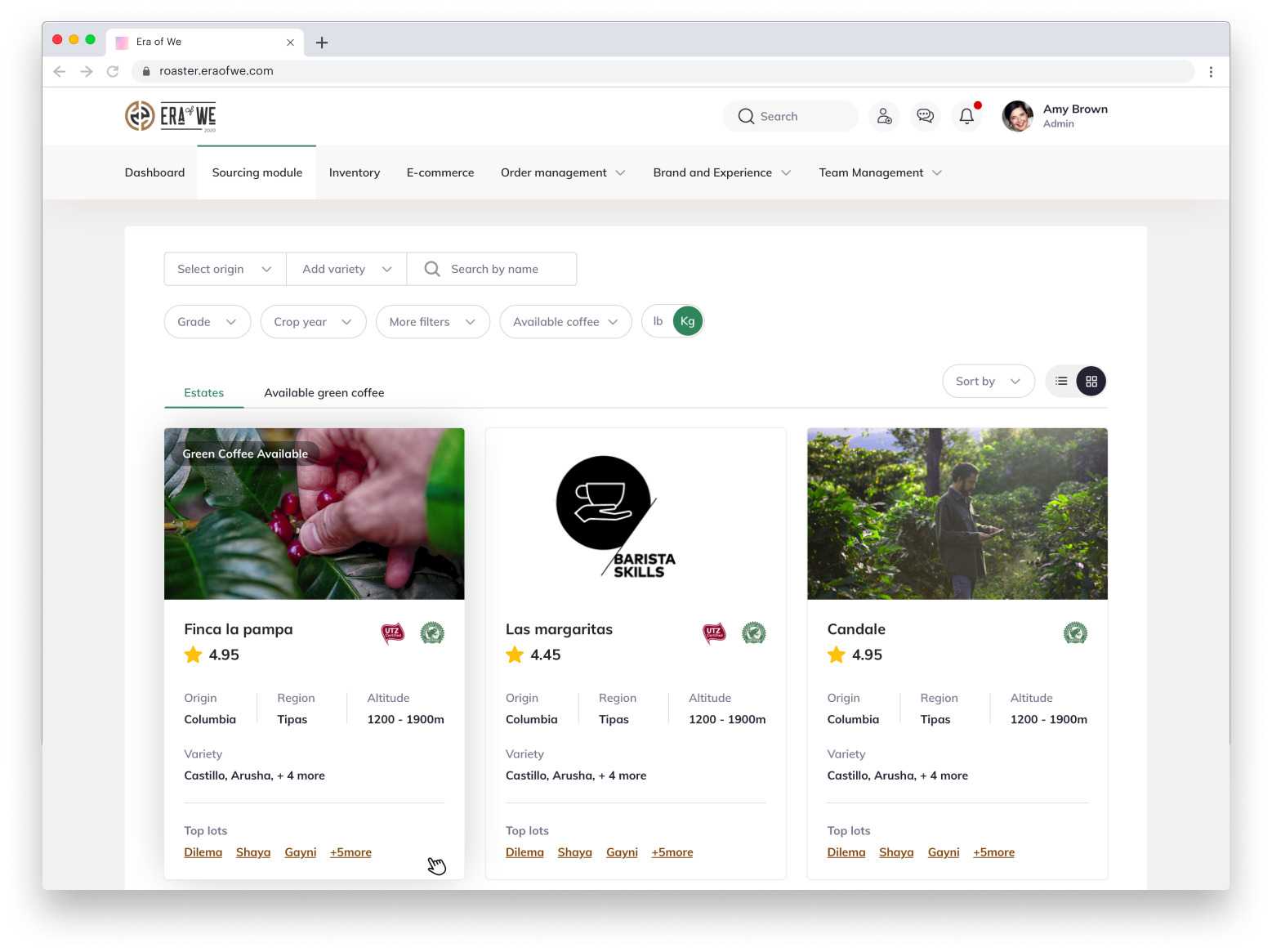
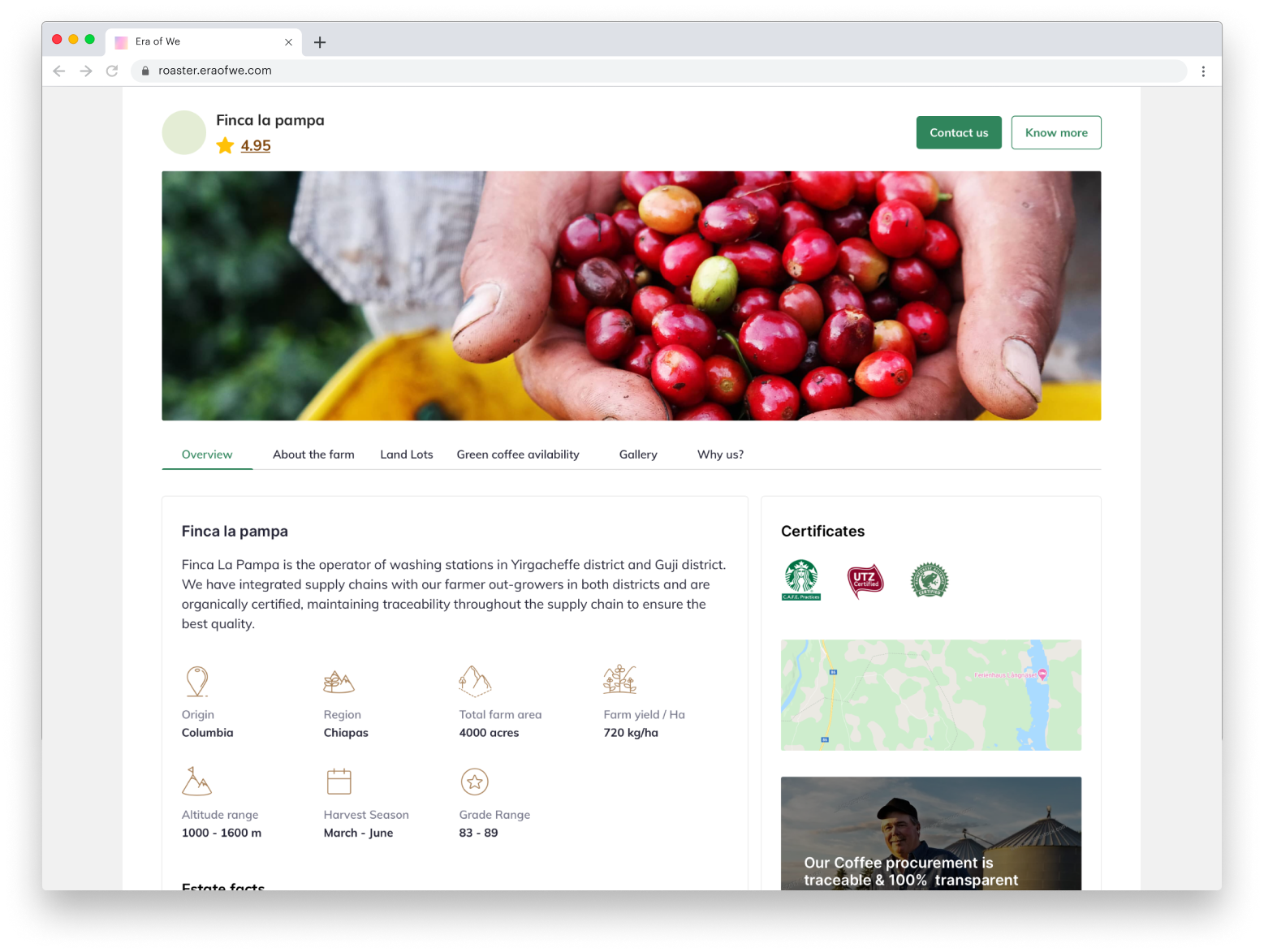
Swipe through the prototype to see the story demo and learn something new about the trade!
INCREASING ACCOUNTABILITY
Traceable products
Research highlighted a major gap in traceability with the supply chain. 70% of consumers, baristas and cafes are not aware of the processes of coffee despite being involved in ithe trade due to opaque processes.
I was involved with the developers to create accountability checks within the systems, where any product information can be traced back using a QR code by a user. Throughout the system, I built information points where the users can personalise each of their stories and share with their customers to bring more credibility to their brands. The aim was to not just bring tracability but also educate the users with the information.
SOLUTION 3
Tearing down communication barriers
To increase communication and trust among all stakeholders, a chat-based messaging system supporting multi-lingual translations for users to feel at home.
To grow trust among the chain we installed a feedback loop system at multiple steps where stakeholders can raise disputes and voice their concerns.

FACILITATOR INCLUSION
Instead of eliminating, including facilitators
One of the biggest challenges of the projet was to translate the facilitator processes from paper to screen. Today most of the process is documented and followed with a paper trail. Because of this a lot of steps are opaque.
When digitizing, much could not be changed in terms of the steps conducted, as they have been set. My main aim was to improve the documentation and the experience of following those processes. The platform captures each of the process by following the rules to allow tracking by both the estates and facilitators, along with opening communication by providing an inbuilt chat system and a dedicated team memebr for each servcie.
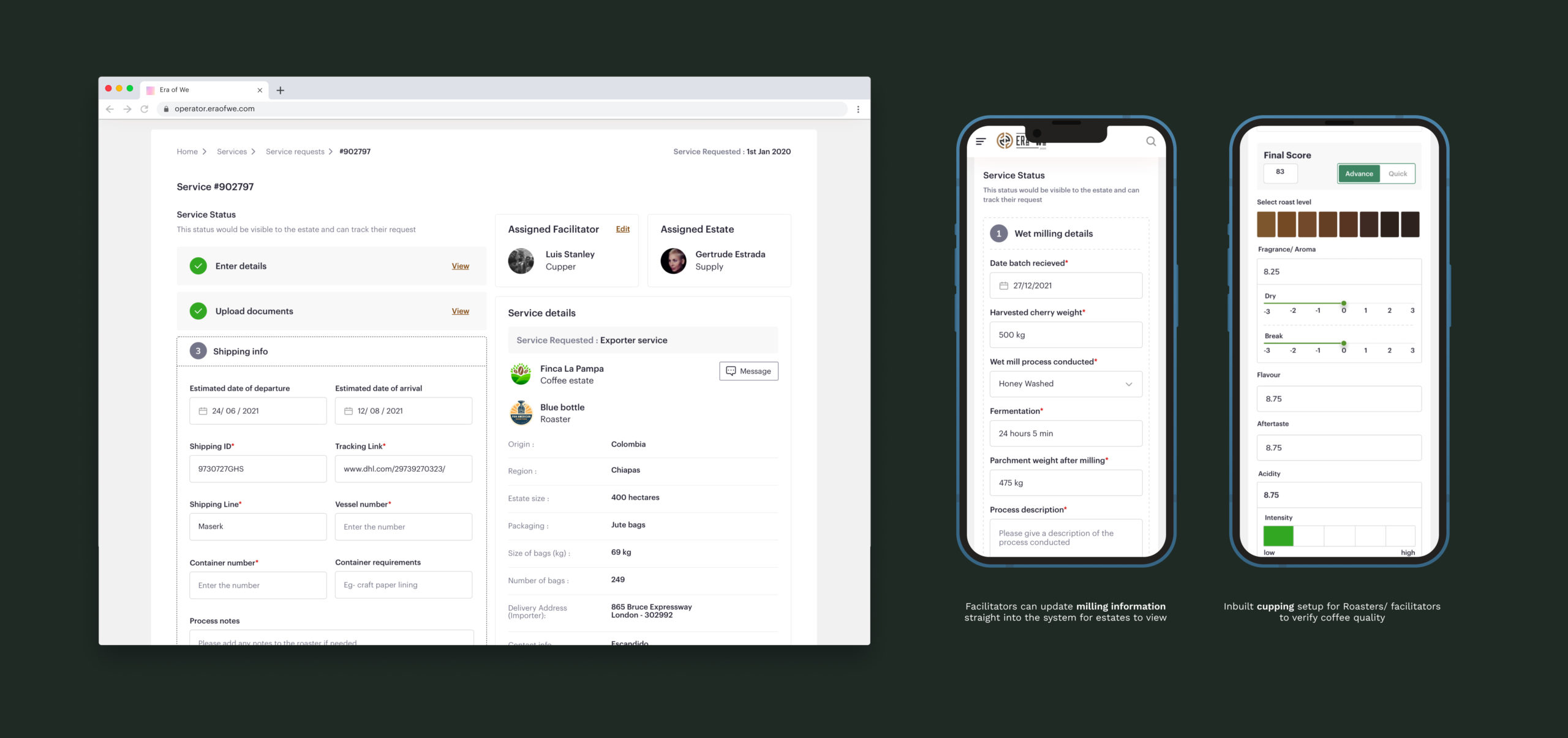
Project Learnings
This project has been a rollercoaster ride, from working with a 50+ team from around the world remotely to a pandemic. It has contributed to shaping me in various ways.
- Management is Key
Working in such a big team has its pros and cons. Management becomes complex when 5 different teams are working in different timezones. Throughout the project, we faced issues to keep everybody on the same page and avoid miscommunications. This gave me the opportunity to step up from the role of a designer to a managerial role by putting in place methodologies to ensure efficient communication. - Experience in the pandemic
Though the pandemic has been devastating, the unique challenges faced during this time have developed qualities in me holistically and not just a designer. The remote work taught me to take charge of leadership, adapt to new tools, working outside my comfort zone and learning to be more productive by enhancing my communication skills.